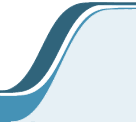First Draft Outline as Received from Author
Introduction Mutation
Mutations are random events
Mutations can involve small changes in DNA sequence, alterations in chromosome structure, or changes in chromosome number
Experiment 17A: X-rays were the first environmental agent shown to
cause mutations.
A variety of agents can cause mutations
Mutagens alter DNA structure in different ways
The mutation rate is a measure of new mutations per cell generation
Testing methods can determine if an agent is a mutagen
Certain viruses have unusually high rates of mutation
Trinucleotide repeat expansion is a mutational mechanism that causes certain human genetic diseases
Consequences of Mutation
Gene mutations can alter the coding sequence within a gene
Gene mutations can occur outside of the coding sequence and still influence
gene expression
Changes in chromosome structure can affect the expression of a gene
Mutations can occur in the germ line or in somatic cells
In Vitro Site-Directed Mutagenesis
DNA Repair
Experiment 17B: Direct evidence for DNA repair was obtained in studies showing that thymine dimers can be "excised" from DNA
Damaged bases can be directly repaired
The excision of damaged DNA is an important mechanism to repair DNA
Newly replicated DNA can be repaired by a mismatch repair mechanism
Damaged DNA can be repaired by recombination
Actively transcribed DNA is repaired more efficiently than nontranscribed DNA
Conceptual Summary |
Final Developed Outline
Consequences of Mutation
Gene mutations are molecular changes in the DNA sequence of a gene
Gene mutations can alter the coding sequence within a gene
Gene mutations are given names that describe how they affect the wild-type genotype and phenotype
Gene mutations can occur outside of the coding sequence and still influence gene expression
DNA sequences known as trinucleotide repeats may cause mutation
Changes in chromosome structure can affect the expression of a gene
Mutations can occur in germ line or somatic cells
Occurrence and Causes of Mutation
Spontaneous mutations are random events
Randomly occurring mutations can give an organism a survival advantage
The mutation rate is a measure of new mutations per generation; the mutation frequency is the relative occurrence of a mutation within a
population
Experiment 17A: X-rays were the first environmental agent shown to cause
induced mutations, by Muller in 1927
Mutagens alter DNA structure in different ways
Testing methods can determine if an agent is a mutagen
DNA Repair<4strong>
Damaged bases can be directly repaired
Excision repair systems remove damaged nucleotides or bases from DNA
Mismatch repair systems recognize and correct a base pair mismatch
Damaged DNA can be repaired by recombination
Actively transcribing DNA is repaired more efficiently than nontranscribed DNA
Conceptual Summary |


